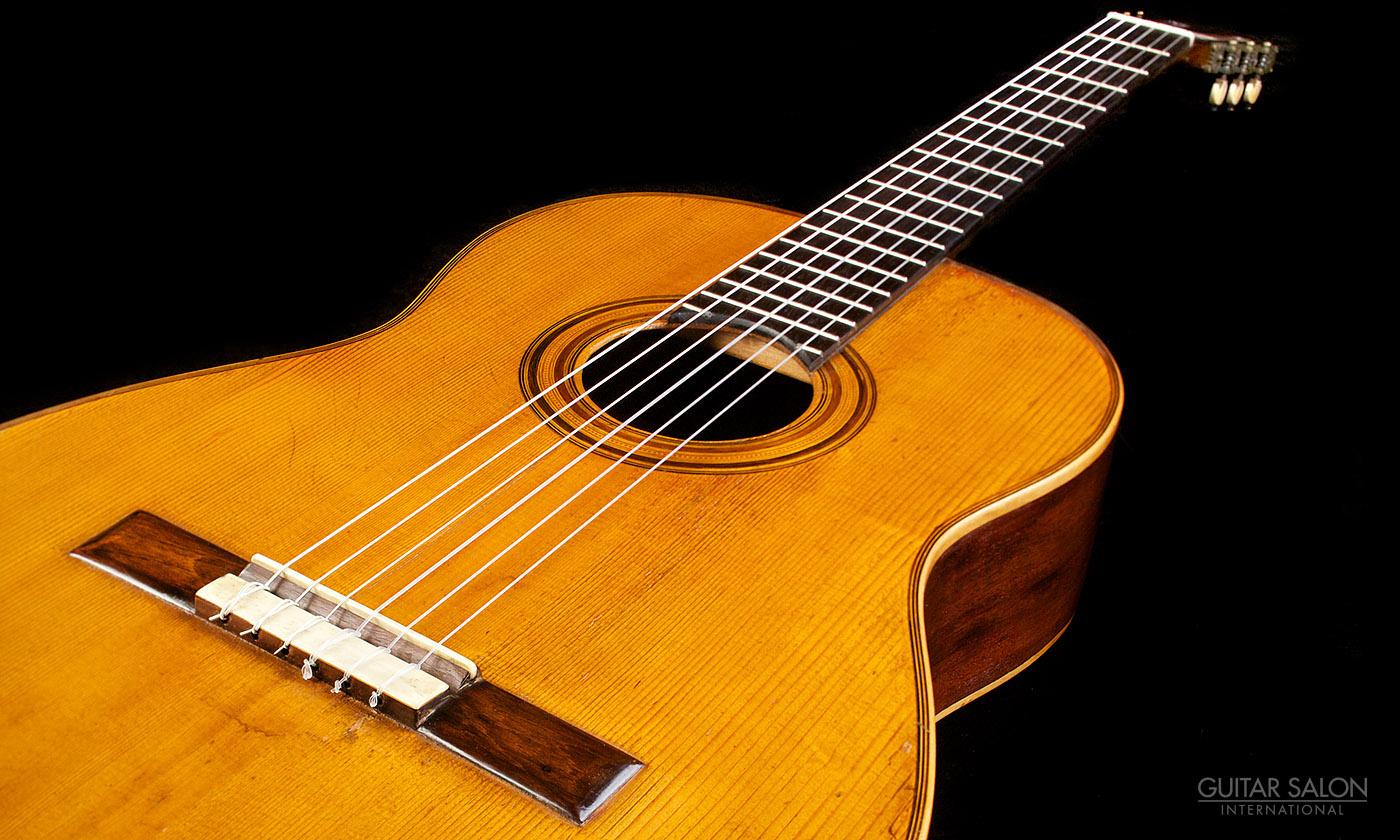1888 Torres SE 115: A fine example of the maker who set the standard for the classical guitar

(Thanks to Guitar Salon International for their entry and this photo of the 1888 Torres SE 115)
Between its many hundreds of videos and extremely informative site and blog, Guitar Salon International is doing quite a service for classical guitar players and fans.
Hundreds of historic instruments have passed through the doors of this Santa Monica institution, and this is no exception.
This 1888 Torres (Second Epoch No. 115) is historic not just because it has survived more than 120 years. Maker Antonio de Torres is the man whose instruments ushered in the “modern” era of classical guitar in the hands of such legends as Francisco Tarrega and Miguel Llobet.
If you wonder about the “reference” sound of the spruce-topped classical guitar, this is it.
This particular guitar, SE 115 (Torres’ guitars were numbered by him, corresponding to his first and second “epochs” of making instruments), is one number away from Tarrega’s favorite Torres (SE 114), according to the Guitar Salon International web page. That page includes a lot of background on the guitar along with two recent videos of contemporary musicians playing it. Naturally the instrument sounds great.
There is also a video that features a circa 1932 audio recording of its one-time owner Matilde Cuervas, playing this Torres with her husband, the great Emilio Pujol. Cuervas played it for many years, and after her death Pujol himself played the instrument for years before giving it to his niece in 1997.
A student of Tarrega, Pujol is known for his tireless work on the repertoire and technique for the guitar and vihuela. His four-volume “Escuela Razonada de la Guitarra,” three volumes of which were translated into English as “Guitar School,” is a towering work on guitar technique.
Listening to this vintage recording, both Cuervas and Pujol are wonderful players, and seeing the other videos shows how a guitar can survive over 100 years and still sound so good.
Guitarists of the 20th and 21st century wanted louder instruments, leading luthiers to make radical changes to the Torres template. But for smaller audiences and with amplification in larger venues, the Torres-style guitar offers a playing experience and sound that should be cherished in the same way as that of Gibson, Fender and Martin guitars from those makers’ classic eras.